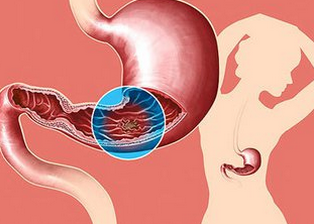SCI论文(www.lunwensci.com):
摘要:研究背景急性上消化道出血(UGIB)的早期治疗目标是积极予以液体复苏以维持血流动力学稳定。现有证据表明,早期内窥镜检查的益处尚不清楚,一些研究表明它可以改善死亡率,而另一些研究则有其他的结果。本研究的目的是评估24小时内早期内窥镜检查是否有有益于降低死亡率。方法回顾性总结2016年7月至2018年7月期间,179例在九江学院附属医院确诊为急性非静脉曲张性上消化道出血的患者资料,然后比较24小时内做内窥镜检查的患者和24小时后行内窥镜检查的患者之间30天死亡率等临床变量的差异。结果79名急性非静脉曲张性上消化道出血患者中,146例患者在24小时内接受了内窥镜检查,33例患者在24小时后接受了内窥镜检查。急性上消化道出血总死亡率为6.7%(12/179)。两组间30天内的死亡率差异无统计学意义(24小时内6.8%,24小时后6.1%)。两组间30天内再入院率及再出血率亦无差异。两组患者住院时间也相似(6.0天vs 6.1天)。结论研究未发现24小时内内镜检查在改善住院时间、并发症发生率以及30天内死亡率有任何优势。因为在没有任何内镜干预的情况下几乎90%的患者达到了止血的目的,应注重在内镜检查前的支持性管理、积极的液体复苏,以达到血液动力学稳定。
关键词:上消化道出血;非静脉曲张性消化道出血;急诊内镜;死亡率
本文引用格式:刘申颖,施彦卿,雷霞.早期内镜检查对急性非静脉曲张性上消化道出血患者死亡率影响分析[J].世界最新医学信息文摘,2019,19(96):5-6.
Effect of Early Endoscopic Examination on Mortality in Patients with Acute Non-varicose Upper Gastrointestinal Bleeding
LIU Shen-ying,SHI Yan-qing,LEI Xia*
(Department of gastroenterology,affiliated hospital of jiujiang university,Jiujiang Jiangxi)
ABSTRACT:Introduction Nitial management of acute upper gastrointestinal bleeding(UGIB)aims towards aggressivefluid resuscitation to maintain hemodynamic stability.Existing evidence regarding the benefitof early endoscopy is unclear with some studies suggesting mortality benefits and somesuggesting otherwise.The purpose of this study is to evaluate if there is any mortality benefitof doing early endoscopy within 24 hours of presentation.Methods Rom July 2016 to July 2018,179 patients admitted with a diagnosis of non-variceal UGIB in Affiliated hospital of jiujiang university were retrospectively reviewed.Clinical variables including 30-day mortality were then compared between the patients who had endoscopy within 24 hours with those who had endoscopy after greater than 24 hours.Results Ut of 179 patients admitted for non-variceal UGIB,146 underwent endoscopy within 24 hours of presentation and 33 underwent endoscopy after 24 hours.The overall mortality associated with UGIB was 6.7%(12/179).There was no statistically significant difference found in 30-day mortality between the two groups(6.8%within 24 hours vs 6.1%after 24 hours).There was also no difference in 30-day eadmission or rates of rebleeding among the two groups.The length of stay was also similar in both groups(6.0 days vs 6.1 days).Conclusion His study did not find any advantage of endoscopy within 24 hours on length of stay,rate of complications,and 30-day mortality.As hemostasis is achieved in almost 90%of patients with supportive management without any endoscopic intervention,focus should be made on aggressive fluid resuscitation to achieve hemodynamic stability before endoscopy.
KEY WORDS:Upper gastrointestinal bleeding;Non-variceal gastrointestinal bleeding;Urgent endoscopy;Mortality
1背景介绍
上消化道出血(UGIB)是消化内科的常见住院疾病[1]。据报道,UGIB的住院死亡率高达14%。急性UGIB的首要治疗目标是保持积极的液体复苏及维持血液动力学稳定性,如需要,质子泵抑制剂,输血,促凝止血都是可选项[3]。食管胃十二指肠镜检查(EGD)是UGIB的病因评估的金标准。多个指南建议在24小时内进行EGD,尽管现有的证据表明对于UGIB的早期内镜检查的益处仍有争议[4-7]。多项研究表明,急诊内镜检查与改善患者死亡率和预后的病情无关[8-10]。一些研究显示低危患者的早期内镜检查治疗效果不佳。而相反,另几项研究显示了急诊内镜检查对于改善死亡率的益处,急诊食管胃十二指肠镜检查能缩短患者住院时间,并改善患者预后[12-14]。
2材料和方法
我们回顾分析了2016年7月至2018年7月入住九江学院附属医院消化内科的18岁以上患者的电子病历,本研究中所有这些18岁以上的患者均被诊断为急性非静脉曲张性上消化道出血。病人由国际疾病分类ICD 10编码。本研究由九江学院附属医院伦理委员会进行伦理审查,由于研究具有回顾性,因此不需要进行复审。
记录患者的既往病史,包括冠状动脉疾病史、既往充血性心力衰竭史(CHF),糖尿病,高血压和房颤等。临床变量包括内镜检查时间、住院时间、入院后30天死亡率和30天再入院率。将患者分为两组:入院后24小时内行内镜急诊干预患者组和未行内镜急诊干预患者组。比较急诊组和非急诊组的主要指标是30天内的死亡率。次要指标是住院时间长短和30天的再入院率,两者升高被认为是医疗质量差的表现。
3统计分析
为比较分析急诊/非急诊内镜检查中各种有关患者和其各临床变量之间的关系,本研究使用卡方检验和独立样本t检验。P值<0.05为差异有统计学意义。所有分析均使用SPSS 23.0版统计软件包(IBM Corp;Armonk,NY)进行分析。
4结果
179名非静脉曲张性UGIB患者中,146名患者在24小时内接受了内镜检查,33名患者在24小时后接受了内镜检查。患者基础数据及临床特点见表1。两组的平均年龄相似。急诊内镜组的男性比例要高得多。整个研究对象的平均血红蛋白为9.6 g/dl(9.6±2.9)。急诊内镜患者组的血红蛋白均值低于非急诊组,但差异无统计学意义(9.5 g/dl vs 10.4 g/dl,P=0.10)。冠状动脉疾病、糖尿病、慢性阻塞性肺病(COPD)、慢性肾病、高血压等合并症无显著差异,两组患者Charlson合并症评分差异无统计学意义(3.0 vs 2.7,P=0.95)。
与UGIB相关的总死亡率为6.7%(12/179)。两组间30天死亡率差异无统计学意义(24小时内急诊组6.8%,24小时后非急诊组6.1%,P=0.870)。两组再入院30天(急诊内镜组20.5%,非急诊内镜组27.3%,P=0.39),再出血发生率(8.3%vs 12.1,P=0.48)也无差异。两组患者的住院时间也相似(6.0天vs 6.1天,P=0.18)。
5讨论
急性上消化道出血是一种常见病,住院率远高于下消化道出血。UGIB括胃和十二指肠溃疡、食管静脉曲张、门脉高压性胃病和糜烂性食管炎等[16]。胃十二指肠镜检查在UGIB评估中的时机是一个备受争议的话题,一些研究支持急诊胃十二指肠镜检查,而另一些研究没有显示急诊胃十二指肠镜检查有任何改善的结果。我们的研究也没有显示在24小时内接受胃十二指肠镜检查的患者有任何显著的短期死亡率的改善。我们的研究结果与之前的一些研究结果一致,这些研究表明急诊内镜检查对改善死亡率没有益处[8-11]。
一项对81例消化性溃疡继发UGIB患者的回顾性研究显示,在死亡率、再出血率或住院时间等方面的结果没有任何差异,但在急诊内镜组[9]中,高危出血病变的检出率有所增加。在另一项对189名患者的回顾性研究中也发现了类似的结果,该研究比较了在8小时内接受内窥镜检查的患者与在8至24小时内接受内窥镜检查的患者的结果,并没有发现死亡率或复发性出血[10]的差异。
一项包括1,789,532例早期胃十二指肠镜检查患者的回顾性全国研究显示,早期胃十二指肠镜检查患者急性肾功能衰竭、低血容量血症和急性呼吸衰竭[12]发生率较低。早期内镜组的死亡率也较低。在另一项全国性研究中也发现了类似的结果,该研究显示早期胃十二指肠镜检查[13]的死亡率较低。一项对909名住院病人的回顾性研究显示,接受早期内镜检查的病人住院时间较短,复发性出血的发生率较低。
在一项针对12601名患者的全国队列研究中,血液动力学稳定的患者胃十二指肠镜检查的最佳时间为12-36小时,因为死亡率和内镜检查的时间呈u型关系。在12-36小时内行胃十二指肠镜检查的患者死亡率呈上升趋势[17]。因此,胃十二指肠镜检查前的最佳液体复苏可改善急性上消化道出血患者血流动力学稳定及预后。Kumar等人在对361例患者的回顾性研究中发现,接受急诊内镜检查的急性上消化道出血(Glasgow-Blatchford出血评分(GBS)≥12)高危患者的死亡率无显著差异。有趣的是,接受急诊内镜[11]的低危患者(GBS<12)死亡率呈上升趋势。这些发现与Lim等人的一项研究相矛盾,该研究表明,高危患者(GBS≥12)急诊内镜检查与低死亡率[18]相关。
我们的研究有几个局限性,在解释结果时应该谨慎。首先,研究的设计是回顾性的。我们的样本量与之前的研究中包含的成千上万的受试者相比很小。这可能会限制我们对结果的解释。此外,我们没有进行亚组分析来比较高危与低危、血流动力学稳定与血流动力学不稳定患者的死亡率差异。这可能会影响内镜检查时机的决定,因为血液动力学不稳定的高危患者可能受益于早期内镜干预。
6结论
对于上消化道出血患者,24小时内急诊内镜检查可能与较低的死亡率、再出血率、30天再入院和较短的住院时间无关。应首先努力通过最佳的液体复苏来实现这些患者的血流动力学稳定。当然,这需要进一步的随机对照试验来阐明急性上消化道出血患者急诊内镜检查与死亡率的关系。
参考文献
[1]Tielleman T,Bujanda D,Cryer B.Epidemiology and risk factors for upper gastrointestinal bleeding[J].Gastrointest Endosc Clin N Am,2015,25:415-428.
[2]Colle I,Wilmer A,Le Moine O,et al.Upper gastrointestinal tract bleeding management:Belgian guidelines for adults and children[J].Acta gastro-enterologica Belgica,2011,74:45-66.
[3]Kumar NL,Travis AC,Saltzman JR.Initial management and timing of endoscopy in nonvariceal upper GI bleeding[J].Gastrointest Endosc,2016,84:10-17.
[4]Hwang JH,Fisher DA,Ben-Menachem T,et al.The role of endoscopy in the management of cute non-variceal upper GI bleeding[J].Gastrointest Endosc,2012,75:1132-1138.
[5]Laine L,Jensen DM.Management of patients with ulcer bleeding[J].Am J stroenterol,2012,107:345-360.
[6]Sung JJ,Chan FK,Chen M,et al.Asia-Pacific Working Group consensus on non-variceal upper gastrointestinal bleeding[J].Gut,2011,60:1170-1177.
[7]Dworzynski K,Pollit V,Kelsey A,et al.Management of acute uppergastrointestinal bleeding:summary of NICE guidance[J].BMJ,2012,344:3412.
[8]Bjorkman DJ,Zaman A,Fennerty MB,et al.Urgent vs.elective endoscopy for acute non-variceal upper-GI bleeding:an affectiveness study[J].Gastrointest Endosc,2004,60:1-8.
[9 Schacher GM,Lesbros-Pantoflickova D,Ortner MA,et al.Is early endoscopy in the emergency room beneficial in patients with bleeding peptic ulcer?A”fortuitously controlled”study[J].Endoscopy,2005,37:324-328.
[10]Tai CM,Huang SP,Wang HP,et al.High-risk ED patients with nonvariceal upper gastrointestinal hemorrhage undergoing emergency or urgent endoscopy:a retrospective analysis[J].Am J Emerg Med,2007,25:273-278.
[11]Kumar NL,Cohen AJ,Nayor J,et al.Timing of upper endoscopy influences outcomes in patients with acute nonvariceal upper GI bleeding[J].Gastrointest Endosc,2017,85:945-952.
[12]Garg SK,Anugwom C,Campbell J,et al.Early esophagogastroduodenoscopy is associated with better Outcomes in upper gastrointestinal bleeding:a nationwide study[J].Endosc Int Open,2017,5:376-386.
[13]Wysocki JD,Srivastav S,Winstead NS.A nationwide analysis of risk factors for mortality and time to endoscopy in upper gastrointestinal haemorrhage[J].Aliment Pharmacol Ther,2012,36:30-36.
[14]Cooper GS,Chak A,Way LE,et al.Early endoscopy in upper gastrointestinal hemorrhage:associations with recurrent bleeding,surgery,and length of hospital stay[J].Gastrointest Endosc,1999,49:145-152.
[15]Longstreth GF.Epidemiology of hospitalization for acute upper gastrointestinal hemorrhage:a population-based study[J].Am J Gastroenterol,1995,90:206-210.
[16]Enestvedt BK,Gralnek IM,Mattek N,et al.An evaluation of endoscopic indications and findings related to nonvariceal upper-GI hemorrhage in a large multicenter consortium[J].Gastrointest Endosc,2008,67:422-429.
[17]Laursen SB,Leontiadis GI,Stanley AJ,et al.Relationship between timing of endoscopy and mortality in patients with peptic ulcer bleeding:a nationwide cohort study[J].Gastrointest Endosc,2017,85:936-944.
[18]Lim LG,Ho KY,Chan YH,et al.Urgent endoscopy is associated with lower mortality in highrisk but not low-risk nonvariceal upper gastrointestinal bleeding[J].Endoscopy,2011,43:300-306.
关注SCI论文创作发表,寻求SCI论文修改润色、SCI论文代发表等服务支撑,请锁定SCI论文网! 文章出自SCI论文网转载请注明出处:https://www.lunwensci.com/yixuelunwen/27209.html


